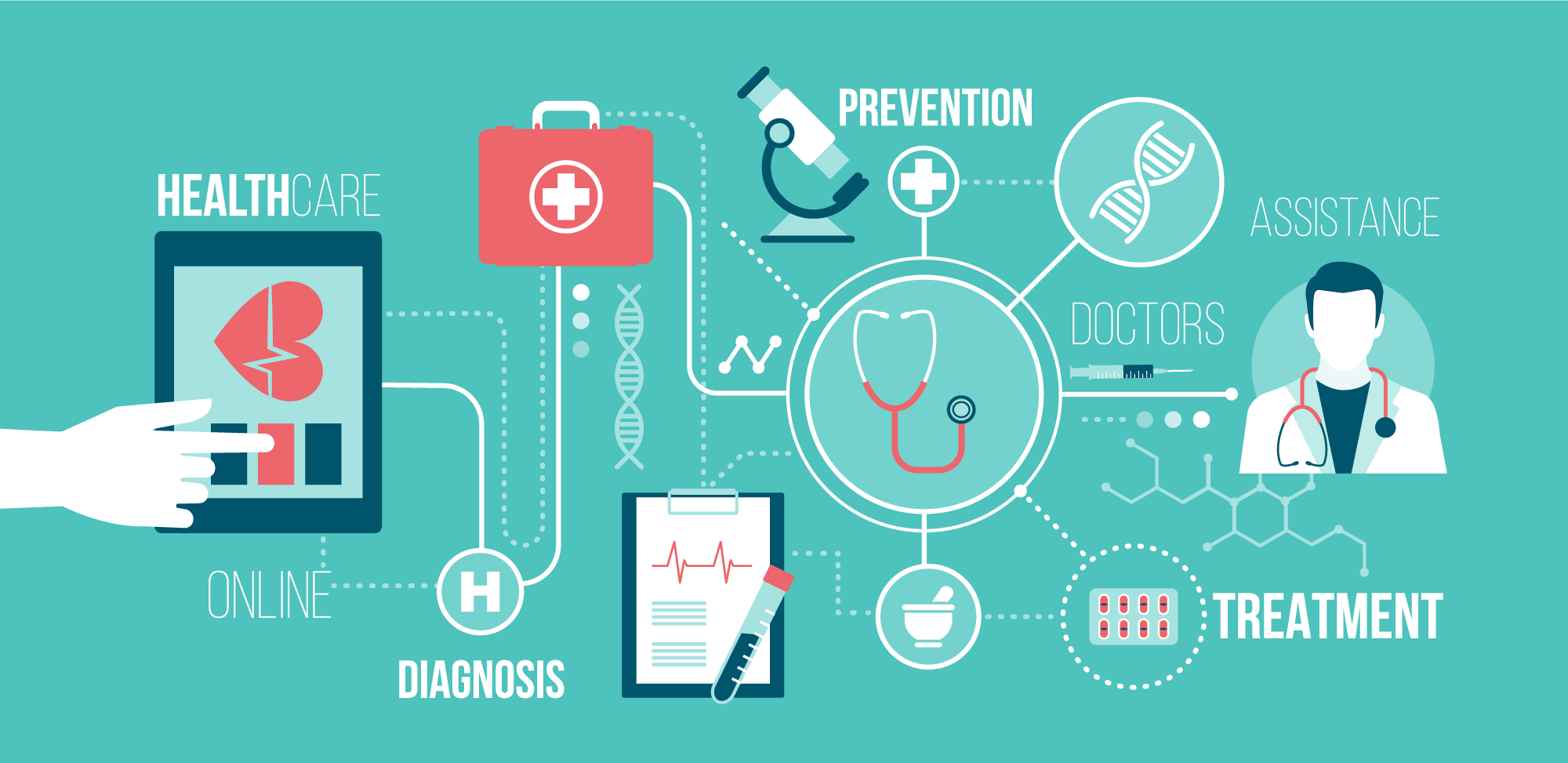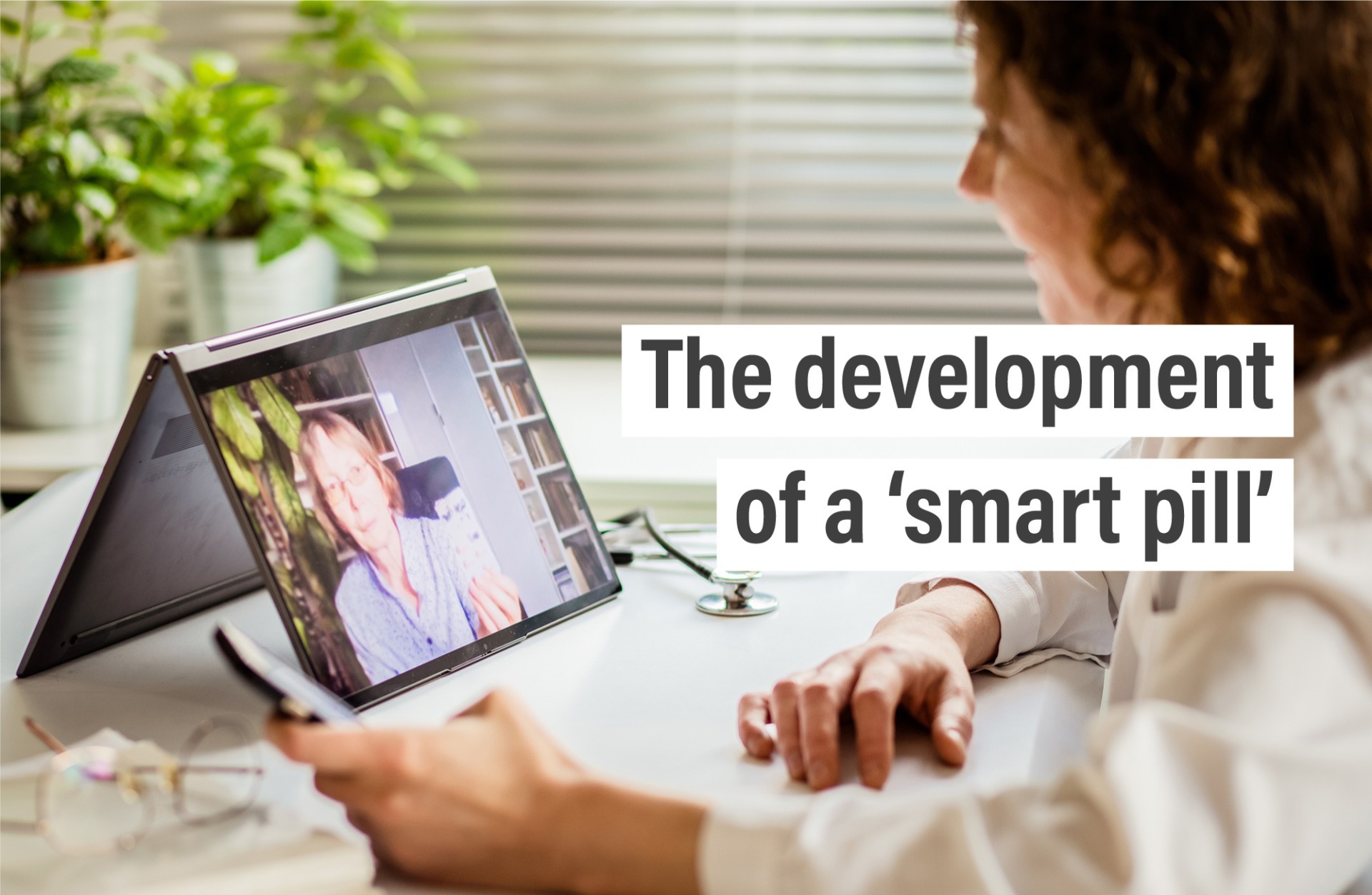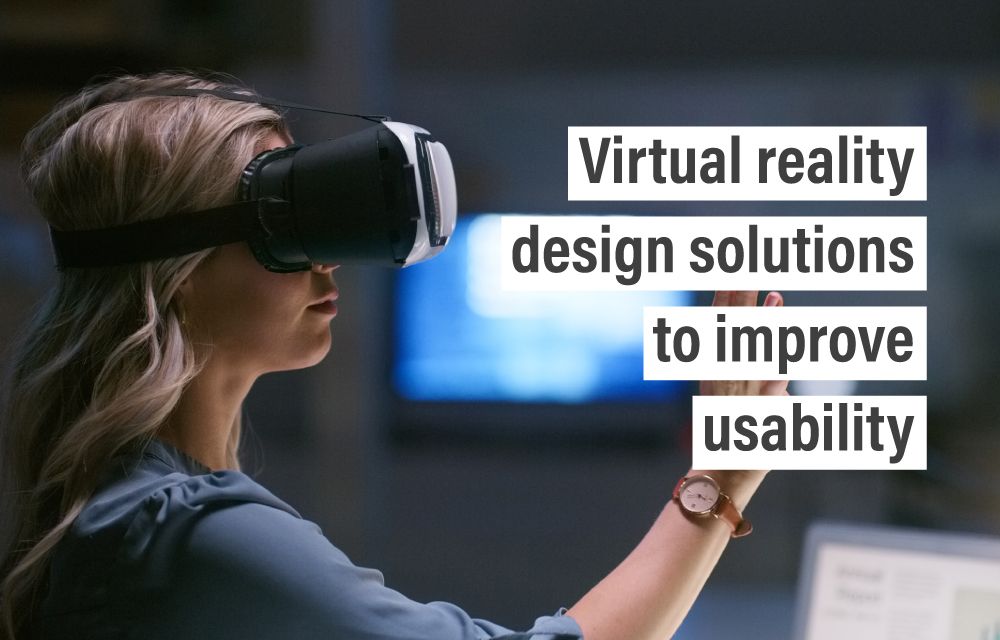The transformational potential of IoT in healthcare
Reading time 17 mins
Key Points
- The digital age is transforming healthcare due to networked devices sending data over the internet
- IoMT refers to how the Internet of Medical Things enables patients to have more autonomy and agency over personal healthcare, as well as medical practitioners to conduct Remote Patient Monitoring, diagnostics, and treatments remotely
- The digital healthcare market is estimated to reach $176.82 billion by 2026, showing an annual growth rate of 24.5%
- Remote Patient Monitoring (RPM) devices are being used to monitor blood pressure and glucose levels, as well as provide internal assessments (e.g. heart and lung performance) and detect/diagnose chronic diseases sooner
- Digital diagnostics in the form of Point of Care (POC) devices give quick feedback regarding medical tests and help to implement therapy faster
Is your business ready to harness the potential of IoT? Our expert team can help design and implement bespoke IoT solutions. Reach out to us now to kick-start your IoT journey.
Ben Mazur
Managing Director
I hope you enjoy reading this post.
If you would like us to develop your next product for you, click here
The digital age is reinventing just about everything from transportation and remote working to personal fitness and shopping. Healthcare is no different. Some might argue that the medical field, driven by data, may have come into play late but is nevertheless transforming faster. An increasing number of networked devices connected to the internet that can send data via the internet (IoT) coupled with a global population that’s more concerned about their health (and having agency over it) has led to IoT in healthcare entering the mainstream.
The pandemic highlighted the need for patients suffering from non-COVID-related health concerns to receive consultations and diagnoses remotely. One UK study found that their virtual GP platform skyrocketed from 500 sessions per month before the pandemic to over 200,000 during [1]. Digital diagnostic tools such as skin cancer bots and heart rate monitors relieved the pressure on the NHS while providing patients with chronic conditions the preliminary or preventative assistance they needed.
The Internet of Medical Things (IoMT)
If economic forecasts are anything to go by – and they are – the increased use of IoT in healthcare extends beyond COVID. A market research report published by Fortune Business Insights estimates that the digital healthcare market will reach $176.82 billion by 2026, showing an annual growth rate of 24.5% from 2018, when the market was worth $30.96 billion [2]. This increase is due can be attributed to the following:
- The emerging popularity of smart wearables and remote patient monitoring tools
- The ability of patients to autonomously track their health and monitor treatments
- Information collected by digital medical devices that benefit patients, families, physicians, medical centres, and insurance companies
- IoMT devices make it easier to keep track of a patient’s health records, which allows medical practitioners to be more proactive, resulting in more comprehensive treatments
- A rising population of aged people who are more vulnerable to various diseases is a strong motivator for better diagnostics, and treatment
- Diagnostics facilitated by AI and machine learning reduce the rate of readmissions in hospitals and medical centres
- Health-conscious millennials popularising the use of self-monitoring devices in the form of smart wearables operational from their smartphones
A similar study conducted by Emergen Research corroborated these findings. They added that the emergence of advanced sensors and embedded software, as well as technological advances in healthcare infrastructure, will also contribute to market growth.
That being said, one of the most significant factors contributing to IoT in healthcare going mainstream is the user experience. In a previous post, we looked at the importance of human-centered design (e.g. usefulness, simplicity) to a product’s success, so IoMT must be getting something right!

Popular digital monitoring, diagnostics and treatment devices
The significant growth of the digital healthcare market highlights the human-driven need for monitoring, diagnostic, and treatment tools that can be used remotely (i.e. outside a hospital or medical centre). This has led to a wide variety of devices that significantly benefits users, medical practitioners, and carers.
Remote patient monitoring (RPM) is the most common application for IoT in healthcare. This consists of tools (e.g. smartwatches) that monitor, report, and analyse medical conditions (e.g. blood sugar levels) and give real-time feedback. Which, in turn, enables both patients and healthcare providers to understand current health indicators better and make proactive decisions [3] sooner rather than later. Some of the most common medical devices in this category include:
- Blood pressure measurement devices (e.g. upper arm or wrist cuffs, finger devices, ambulatory blood pressure monitors) that calculate a patient’s blood pressure and heart flow. Devices can be connected via the internet or Bluetooth and send data in real-time for a healthcare provider to review. Measurements are synched and shared with relevant parties automatically, and some devices have a ‘memory’ function that stores information from the last measurement and previous readings.
- Flash Glucose Monitors and Continuous Glucose Monitors allow people with diabetes and their health providers to monitor their blood sugar levels without pricking their fingers. A small sensor that reads blood sugar levels is placed on the body and can be worn day and night. These sensors are then connected to smart devices (e.g. a watch or mobile phone) and can even be programmed to sound an alarm if levels get too low or high. Users can develop a deeper engagement with their health as the data provided allows them to see how their food, activity, and sleep habits affect their blood sugar and make behavioural changes accordingly
- Portable ECG and Digital Electronic Stethoscope helps users to perform frequent and comprehensive internal assessments for early disease or crisis prevention/detection. Patients can capture heart, lung, and bowel sounds from anywhere they happen to be and have that information sent automatically to a medical centre for review
- Biometric sensors in the form of a sticker or patch monitor vital signs around the clock. The BioButton® is a ‘medical grade wearable device’ stuck onto the body. It monitors temperature, resting heart rate, respiratory rate, body position/posture and can be personalised to provide alerts
Digital diagnostics made possible by IoT in healthcare have been – and will continue to be – a game changer in medicine. These Point of Care devices (POC) give quick feedback regarding medical tests and help to implement therapy faster. Some commonly used applications include pregnancy testing, faecal immunochemical tests (screens for colon cancer), and haemoglobin tests (for anaemia). POC devices with cameras allow doctors to access lab-quality results remotely and facilitate the early diagnosis of potentially fatal diseases [4]:
- Urology Imaging allows for critical diagnosis and monitoring of urinary tract and kidney diseases. For example, by using digital imagery to analyse a monolayer of urine sediment, samples can be classified based on size and shape. Medical technicians can then zoom in on these images for a detailed view without needing a manual microscopy
- Ophthalmologic diagnostics and monitoring equipment, such as the AI-based system developed by DeepMind in partnership with Moorfields Eye Hospital. 3D retinal scans are analysed and used to detect severe diseases such as glaucoma and age-related macular degeneration in their early stages
- Dental devices using intraoral cameras provide detailed imagery of hidden or inaccessible areas of the mouth to identify defects and decay. Not only does this help to give treatments faster, but it also improves the patient-dentist relationship as people can see for themselves the severity of the affected area
- High-resolution images greatly aid dermatology and the detection of skin cancer. Portable, hand-held dermatological devices have come a long way in recent years and are affordable enough to facilitate self-examination by patients, who can capture images from home and share them with their dermatologist in real-time
The benefits of IoT in healthcare go beyond wearables
- Digital health devices (e.g. remote patient monitoring and diagnostics tools) are in the form of wearables, but benefits of IoT in healthcare can be ingestible or used for robot-assisted surgeries
- Can ‘smart pills’ improve non-adherence rates (i.e. patients forgetting or failing to take medication as prescribed)?
- How are ingestible sensors for diagnostic purposes being used?
- Robotic-assisted surgeries are proving to be less invasive and painful and result in faster healing than conventional surgeries
- IoT in healthcare could be transformational in improving unequal access to healthcare by remote, marginalised, or minority populations
- Challenges such as data protection, accuracy, transmission, and integration still need to be overcome

While most digital health devices, Remote Patient Monitoring (RPM) and diagnostics tools come in the form of wearables, the benefits of IoT in healthcare can go beyond that.
Non-adherence – failing or forgetting to take medication as prescribed – is cited as being medicine’s weakest link [5]. The overall cost of wasted medication is estimated to cost the NHS £300m every year, which doesn’t take into account the cost of additional doctor’s visits, further tests, and unfavourable patient outcomes (e.g. worsened health). This motivated companies such as Otsuka (a Japanese pharmaceutical company) to invest heavily in the development of a ‘smart pill’:
- Drugs with tiny sensors inside them which can track medical adherence
Ingestible sensors transmit a signal to a patch worn on the patient’s torso once they reach the stomach - A digital record of the patient having taken the medication is sent to the patient’s mobile phone
- Doctors and caregivers can monitor whether or not medication was taken correctly via cloud connectivity
Initial trials weren’t successful as there was no conclusive evidence that smart pills improved adherence. That said, ingestible sensors (designed to dissolve in the body with no side effects) for diagnostics are continuing to be developed. These devices could collect data from inside the human body less invasively and help pinpoint tumours, gastrointestinal problems, and internal bleeding [6].
Ingestible sensors aside, one area in which the benefits of IoT in healthcare for medical treatments is having undeniable success, is with robotic-assisted surgeries [7]:
- Allow doctors to perform complex procedures with more precision
- Considered to be less invasive than ‘conventional surgery’ as the size of incisions is smaller, which also leads to faster healing times and less scarring
- The robotic surgical system uses mechanical camera arms, with tiny surgical instruments attached to them, to provide the surgeon (who controls the robot) with a high-resolution, magnified, 3D view of the surgical site
- Result in fewer complications, less blood loss and less pain
Medical IoT (IoMT): Game changer or inconsequential player?
Aside from the understandably dubious benefits of ingestible smart pills, the benefits of IoT in healthcare provides a wide range of solutions that promote health and well-being. Some of these IoMT solutions are inexpensive (or can be reimbursed by insurance), mostly user-friendly, definitely respond to the demand for remote monitoring devices, and empower patients and their healthcare providers to make better decisions faster.
The impact IoT in healthcare has on society as a whole, especially as it relates to social equity, could be a real game changer. Disturbingly, we still live in a society where race, geographic location, gender, and social position decide the extent of our access to healthcare. The UK Health Security Agency (UKHSA) is tasked with preparing for, preventing, and responding to health hazards to achieve more equitable outcomes:
- Women who live in the most deprived parts of England spend over 19 years longer in poor health compared to women living in more affluent areas
- The life expectancy of homeless people is 30 years lower than the general population
- During the pandemic, men and women of Bangladeshi backgrounds were twice as likely to die from COVID than people from white British backgrounds
- Since 2010, improvements in life expectancy have stalled for the UK population as a whole
In addressing these inequalities, one of the areas of work that UKHSA will focus on improving, is data and surveillance. They must be able to engage with the public better to fully understand the needs of deprived, remote, and vulnerable populations. Digital healthcare devices and Remote Patient Monitoring could significantly help in this regard – and would simultaneously provide people who are being neglected with the healthcare they need.

The biggest challenges facing IoT in healthcare
IoMT still has to overcome valid concerns regarding personal data protection and patient privacy – especially where Big Data is concerned. In addition, new products must undergo stringent regulatory and approval requirements, which are costly and time-consuming. Additional barriers to IoT in healthcare truly going mainstream include [8]:
- Data Accuracy: How much do patients and doctors trust that a small device attached to one’s wrist, for example, can accurately monitor a chronic disease?
- The sheer amount of data that healthcare providers are bombarded with can be overwhelming. How quickly they can assess which data sets are the most relevant and make split-second decisions while taking human factors (such as making mistakes) into consideration is debatable
- The transmission of information for RPM in real-time relies on several interconnected transfers to happen seamlessly (e.g. from a wearable device to an app on the user’s smartphone, which is then uploaded to the cloud and downloaded by their physician). Power failures happen, apps crash, and mobile networks can lose signal – meaning that data isn’t guaranteed to be delivered reliably and quickly every time
- Systems integration is a problem when devices running on different operating systems aren’t compatible. This can lead to corrupted files and data transfers that are impossible to read
- The cost of these devices for institutions such as the NHS, which are already struggling financially, makes IoT in healthcare problematic to roll out as a nationwide solution
Thus, while IoT in healthcare certainly has the potential to transform patient care and improve health equity, the challenges it has yet to overcome are considerable. The autonomy and agency that digital health devices provide to users and the reduced time and pressure placed on healthcare professionals still have significant benefits.
We prefer to remain optimistic – challenges are simply solutions waiting to be found, which is what we at Ignitec excel at. What are your thoughts? Is IoT in healthcare truly a game changer or merely a nice-to-have option which ultimately won’t transform the medical sector much in the way of diagnostics, monitoring, and treatments?
Feel free to share your thoughts!
- Gienal, C. (2021, July 25). Harnessing Digital to enhance self-care in a post pandemic world: AXA. AXA.com. Retrieved October 18, 2022, from https://www.axa.com/en/insights/harnessing-digital-to-enhance-self-care-in-a-post-pandemic-world
- Fortune Business Insights. (2020, February 20). IOT in healthcare market to reach USD 176.82 billion by 2026: Emerging popularity of smart wearables and remote patient monitoring to add impetus to market. GlobeNewswire News Room https://www.globenewswire.com/news-release/2020/02/20/1987603/0/en/IoT-in-Healthcare-Market-to-Reach-USD-176-82-Billion-by-2026-Emerging-Popularity-of-Smart-Wearables-and-Remote-Patient-Monitoring-to-Add-Impetus-to-Market.html
- Elena Muller, M. P. H. (2022, September 13). 7 common remote patient monitoring devices. HRS. Retrieved October 18, 2022, from https://www.healthrecoverysolutions.com/blog/7-common-remote-patient-monitoring-devices
- e-con Systems (2021, December 10). Point-of-care devices (POC) in the medical industry. News. Retrieved October 31, 2022, from https://www.news-medical.net/whitepaper/20211201/Point-of-care-devices-(POC)-in-the-medical-industry.aspx
- 08 February 2018 By Kirsty Oswald. (2021, February 12). Non-adherence: Medicine’s Weakest link. The Pharmaceutical Journal. Retrieved from https://pharmaceutical-journal.com/article/feature/non-adherence-medicines-weakest-link
- Bhisey, R. (2020, October 8). Ingestible sensors market: Rising awareness among the general population is expected to drive the market. BioSpace. Retrieved from https://www.biospace.com/article/ingestible-sensors-market-rising-awareness-among-the-general-population-is-expected-to-drive-the-market/
- Mayo Foundation for Medical Education and Research. (2022, May 6). Robotic surgery. Mayo Clinic. Retrieved October 15, 2022, from https://www.mayoclinic.org/tests-procedures/robotic-surgery/about/pac-20394974
- IoT, J. T. (2021, October 11). The 5 biggest challenges facing remote patient monitoring. Velos IoT Blog. Retrieved from https://blog.velosiot.com/the-5-biggest-challenges-facing-remote-patient-monitoring
We love to talk about new ideas
Do you have an idea? Book a consultation with an expert - it's free, it's confidential and there are no obligations.
+44(0)117 329 3420
[email protected]
Ignitec Technology Centre
1 The Powerhouse
Great Park Road
Bradley Stoke
Bristol
BS32 4RU


